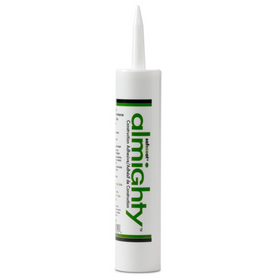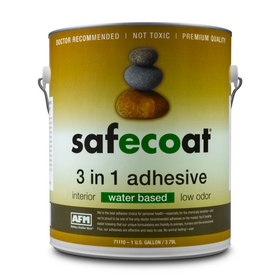
Aluminum and Steel Metal Siding: A Complete Guide
Last Updated: Apr 11, 2025Finding the best exterior cladding for your home requires homeowners to choose between the importance of durability, environmental impact, aesthetics, and performance. The siding you opt for not only gives your home its distinctive "personality" but is also the first line of protection against the elements. Though vinyl siding has continuously been the most popular exterior cladding option for much of the past two decades, homeowners today have several affordable options to choose from. We often think of metal or aluminum as roofing materials. However, one recent survey found that roughly 2 percent of new homes in 2018 opted for aluminum siding for their exterior walls. Below, we take a look at the pros and cons of metal or aluminum siding to help you decide if this cladding option might work for you.
Table of Contents
- What Is Metal Siding?
- What are the Pros of Metal/Aluminum Siding?
- What are the Cons of Metal/Aluminum Siding?
- What Are The Differences Between Steel and Aluminum Siding?
- What Does Metal Siding Look Like?
- How Long Does Metal Siding Last?
- How to Seal Metal Siding?
- How to Install Metal Siding?
- What Tools Do You Need To Install Metal Siding?
- Where to Buy Metal Siding?
- What Home Styles Suit Metal Siding?
- Does Metal Siding Add an Insulation To Your Home?
- Is Metal Siding Recycled?
- How to Dispose of Metal Siding?

What Is Metal Siding?
Metal siding is an exterior cladding alternative that appeals to many homeowners because of its ease of installation, durability, and superior protection from the elements. Metal siding for homes is either made from aluminum or steel, both of which have specific advantages and drawbacks. Both aluminum and steel siding first appeared as commercially available products around the 1940s. However, the "metallic" roof-like appearance of the unfinished metals was not appealing to many homeowners. In the 1980s, manufacturers began experimenting with embossed coatings to the metal. These coatings helped prevent rust and allowed the siding design to simulate the appearance of natural wood.

What are the Pros of Metal/Aluminum Siding?
On the plus side, both aluminum and steel siding is extremely durable. After installation, both of these types of metal siding require virtually no maintenance. Also, metal siding can increase the fire resistance of your home. This additional protection might be a significant advantage for homes located in the western States and Provinces, where extreme wildfires are becoming increasingly common.
Aluminum siding has the added benefit that it simply will not rot, rust, or blister. Of course, both aluminum and steel siding is also resistant to termites and other pests.
What are the Cons of Metal/Aluminum Siding?
On the downside, both aluminum and steel siding have incredibly high energy footprints. Manufactured metals have one of the highest embodied energy ratings of all building materials. This only increases if long-distance shipping is also required. However, homeowners can reduce this negative environmental factor by opting for metal siding products that incorporate large amounts of recycled material.

What Are The Differences Between Steel and Aluminum Siding?
Aluminum siding can dent or scratch easily, potentially leading to costly repairs. Steel siding is generally sturdier and more robust than aluminum siding. This feature allows it to resist dents and scratches better. However, when not properly taken care of, steel siding is prone to rust and corrosion.
Another main difference between aluminum and steel siding is related to the ease of installation. Aluminum is generally much more lightweight than steel. This quality makes it easier to install and can often be done by homeowners with essential tools. The extra weight of steel siding will generally require professional help to install correctly. Steel siding may require additional sealants to protect from corrosion.

What Does Metal Siding Look Like?
Both steel and aluminum siding panels are similar in appearance to vinyl siding. In many cases, you might not be able to tell the difference until you get close enough to touch the siding. Some manufacturers have also begun to make steel and aluminum siding that mimics the look of natural wood grains. Quality Edge, one of the leading manufacturers of steel siding, has a massive inventory of siding in dozens of different colors and versatile woodgrain appearances.
Suppose you like the look of wood but prefer the durability of metal. In that case, you can also find metal siding that comes in 12-by-36 inch or 12-by-48 inch panels, made to look like natural cedar shakes. You can also find aluminum or steel siding manufactured in the typical board and batten style to mimic farmhouses or barndominiums.

How Long Does Metal Siding Last?
With proper maintenance and care, metal siding can easily last for 50 years or more. You will most likely need to repaint your siding every 5-10 years, depending on the product's quality and its level of exposure to the elements. For comparison's sake, vinyl siding can last 50-60 years, while cedar siding can last up to 40 years with proper care.
How to Seal Metal Siding?
All metal siding (both aluminum and steel) will come with some sealant to better protect the metal from corrosion and rust. In the specific case of steel siding, most manufacturers will apply a thin coat of zinc (known as galvanizing the steel) to improve its rust resistance drastically. Many types of aluminum siding will be powder coated to increase the attractiveness of the panel. Powder coatings better adhere to the metal and add an extra layer of protection.
After panel installation of your siding, you can use a simple caulking gun to seal small cracks where panels meet and around windows and doors. After the metal siding is up and sealed, the only real maintenance is to wash the siding gently once a year to remove dust and debris. Suppose you notice that your siding is beginning to rust. In that case, you can use a metal wire brush to remove the rust and then paint with a rust-inhibitive primer before restoring the original color.
Building Materials
Shop high-performance building materials that are vetted for benefits to your health, your pocketbook, and the planet.

AFM Safecoat Almighty Adhesive Case of 12
AFM Safecoat
In Stock

AFM Safecoat 3 in 1 Adhesive
AFM Safecoat
In Stock

Quickscrews Cabinet Install Screws
Quickscrews
In Stock

AutoSlide Automatic Sliding Door System
Autoslide
Out of Stock
2 Colors

Autoslide Smart Tag Pet Door Kit
Autoslide
Out of Stock
2 Colors

AutoSlide Elite iLock Smart Tag Pet Door System
Autoslide
Out of Stock
2 Colors

Quickscrews Pan Head Pocket Hole Screws
Quickscrews
In Stock

Autoslide Elite Smart Tag Pet Door Kit
Autoslide
Out of Stock
2 Colors

Autoslide Motion Activated Pet Door System
Autoslide
Out of Stock
2 Colors

Quickscrews Square Flat Head Wood and Particle Board Screws
Quickscrews
In Stock

How to Install Metal Siding?
Installing metal siding is similar to installing vinyl siding. However, there will be extra weight to deal with, meaning that the job will require two (or more) people. Some large metal panels might easily weigh over 100 pounds, which will require several people to hold in place while the panel is screwed or otherwise attached to the underlying studs. Cutting the metal sheets or panels is also a bit more complicated than wood and can leave potentially dangerous sharp edges.
Most manufactured metal siding products will have specific guidelines for installing based on the particular panels' design. Metal siding does offer a certain degree of water resistance. However, you will need to take special care with flashing between the metal strips to avoid water infiltration. Do you trust in your DIY abilities and have a shed full of underutilized metalworking tools? If so, check out this complete tutorial for metal siding installation.
What Tools Do You Need To Install Metal Siding?
Whereas vinyl siding can be homeowner installed with nothing more than a utility knife and a hammer and nails, installation of metal siding requires the use of several specialized tools, including:
- Tin snips, nibbler cutters, and electric shears for making small cuts to the panels,
- A screw gun or drill for attaching the metal panels to the studs,
- An angle grinder or a miter saw with a metal cutting bit for longer cuts,
- A welder and cutting torch for panel siding,
- Files or sanding pads for the grinder to smooth down edges to avoid cuts.

Where to Buy Metal Siding?
You should be able to find metal siding at most major home improvement stores. However, vinyl, composite, and wood siding are significantly easier to find at these retailers. If you cannot find what you are looking for at chain stores, there are several manufacturers you can find online. Three of the most popular metal siding companies online include:
- Quality Edge: Their Vesta steel planking system offers a sleek aesthetic and weather-tight performance of shiplap. You can choose from eight interchangeable solid hues and four versatile and variegated wood grains.
- McElroy Metal: This company also has an impressive variety of metal siding to choose from. Their website offers a helpful color chart and an interactive visualizer so you can envisage what the panels would look like in your own home.
- Bridger Steel: This company makes recycled steel wall panels that meet the requirements of a LEED-certified project. Their cold-rolled steel can be composed of up to 50 percent recycled content.

What Home Styles Suit Metal Siding?
Because metal siding comes in a wide variety of colors, wood grains, and designs, it can be made to suit virtually any home. However, metal siding that mimics wood is a great option for barn-style houses. Solid color metal panels go well with modernist style homes that incorporate geometric architectural shapes.
Does Metal Siding Add an Insulation To Your Home?
Because of their thinness, neither metal nor aluminum siding offers any insulation capacity on their own. However, rigid foam insulation can be easily applied to the home's exterior before adding the siding. You can find aluminum and steel siding panels that come with a pre-applied, sprayed-on foam insulation backing.

Is Metal Siding Recycled?
Steel has an extremely high overall recycling rate. In 2014, the recycling rate for steel stood at 86 percent. Aluminum only had a total recycling rate of 34.9 percent in 2018. In general, most metal siding that you purchase will have some recycled content. Steel siding panels will generally tend to have a higher percentage of recycled material than aluminum.
Because both steel and aluminum have such a high embodied energy footprint, finding companies that specifically state the amount of recycled metal content that goes into their siding is a good strategy to reduce your home's embodied energy footprint.
How to Dispose of Metal Siding?
Metal siding should easily last a lifetime. However, if you need to replace your siding, you can take both steel and aluminum siding to your nearest scrap yard or recycling center. In many cases, scrap yards may even offer to pay you on a per pound basis for the scrap siding you take to them.
Tobias Roberts
Tobias runs an agroecology farm and a natural building collective in the mountains of El Salvador. He specializes in earthen construction methods and uses permaculture design methods to integrate structures into the sustainability of the landscape.
